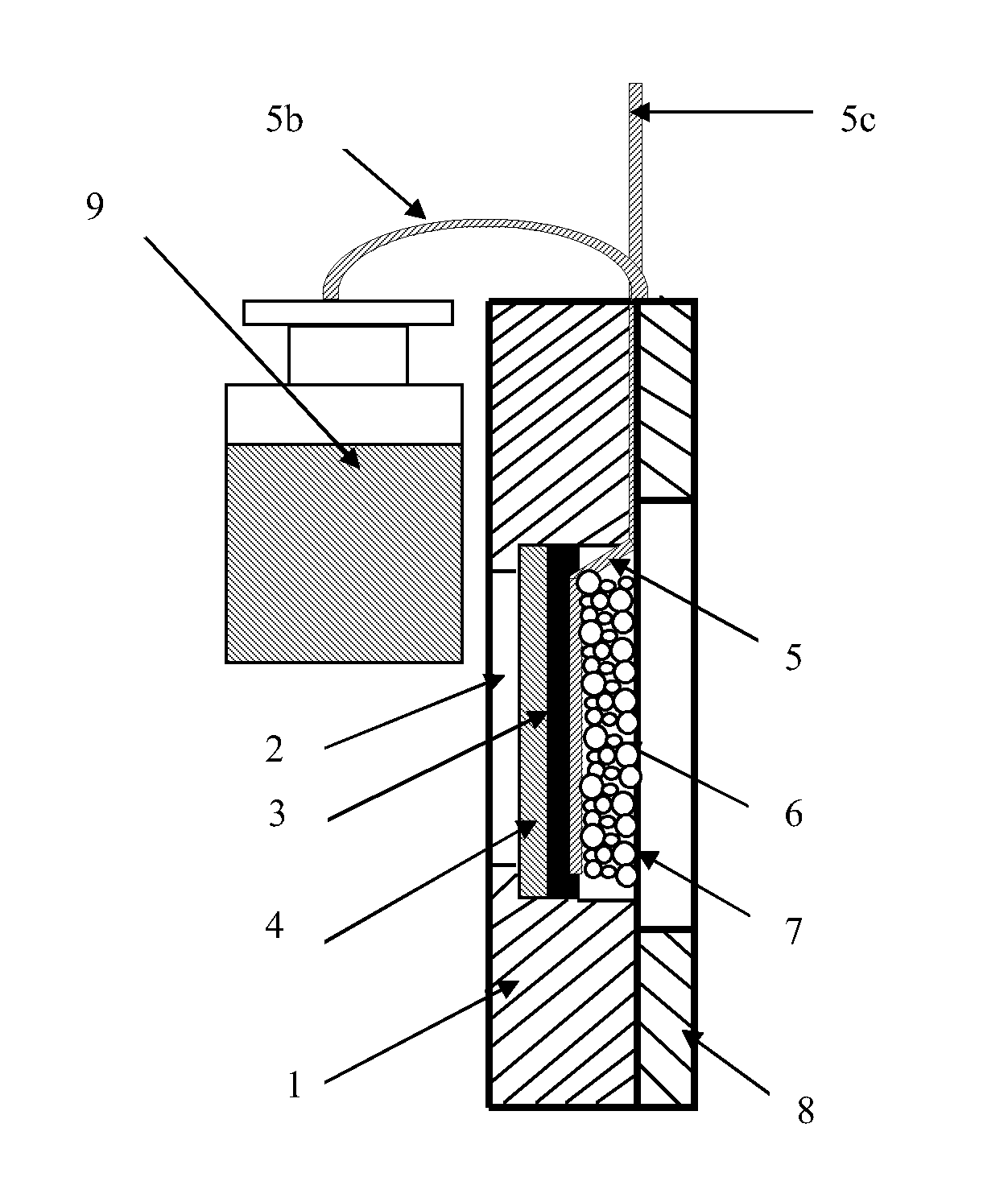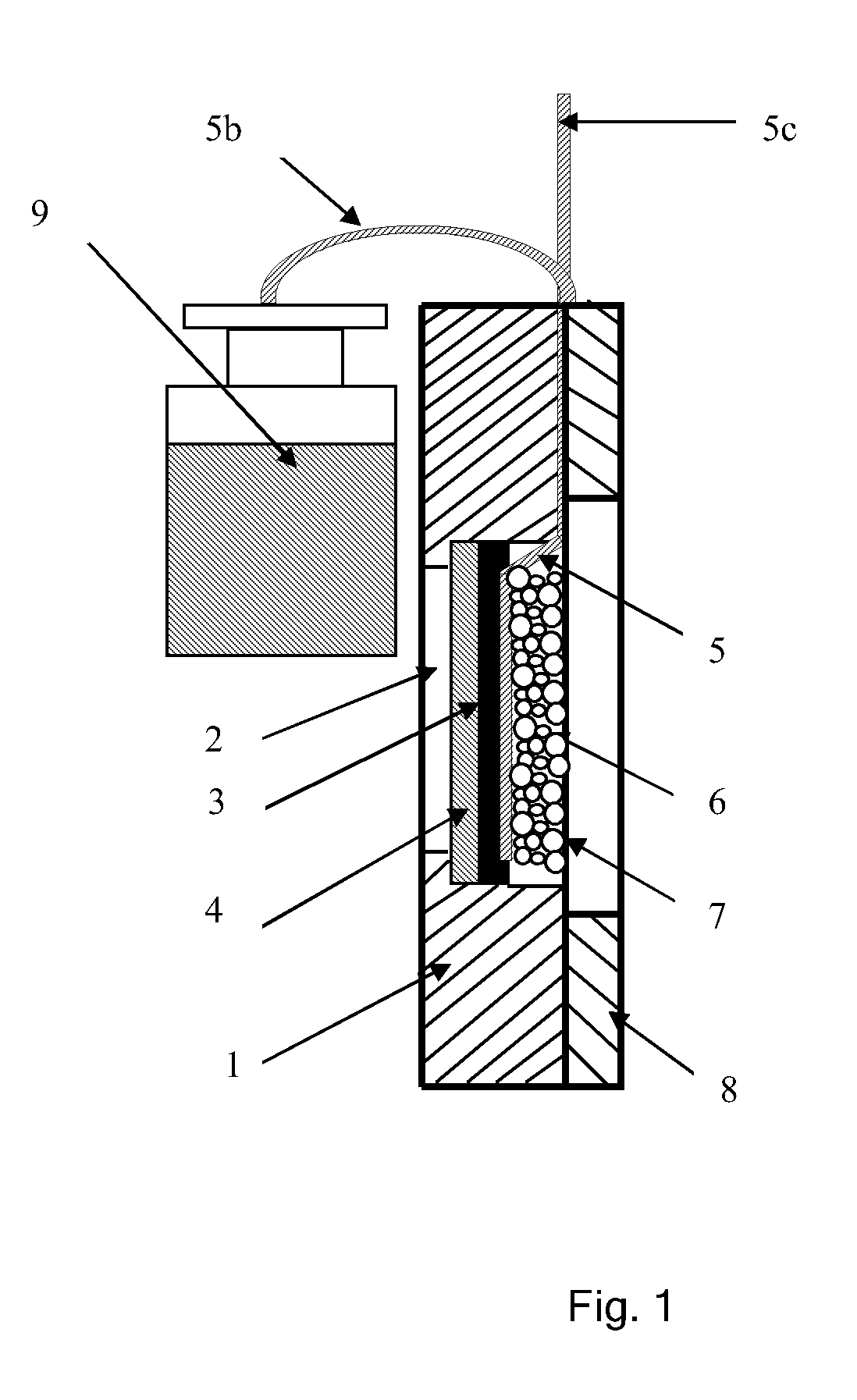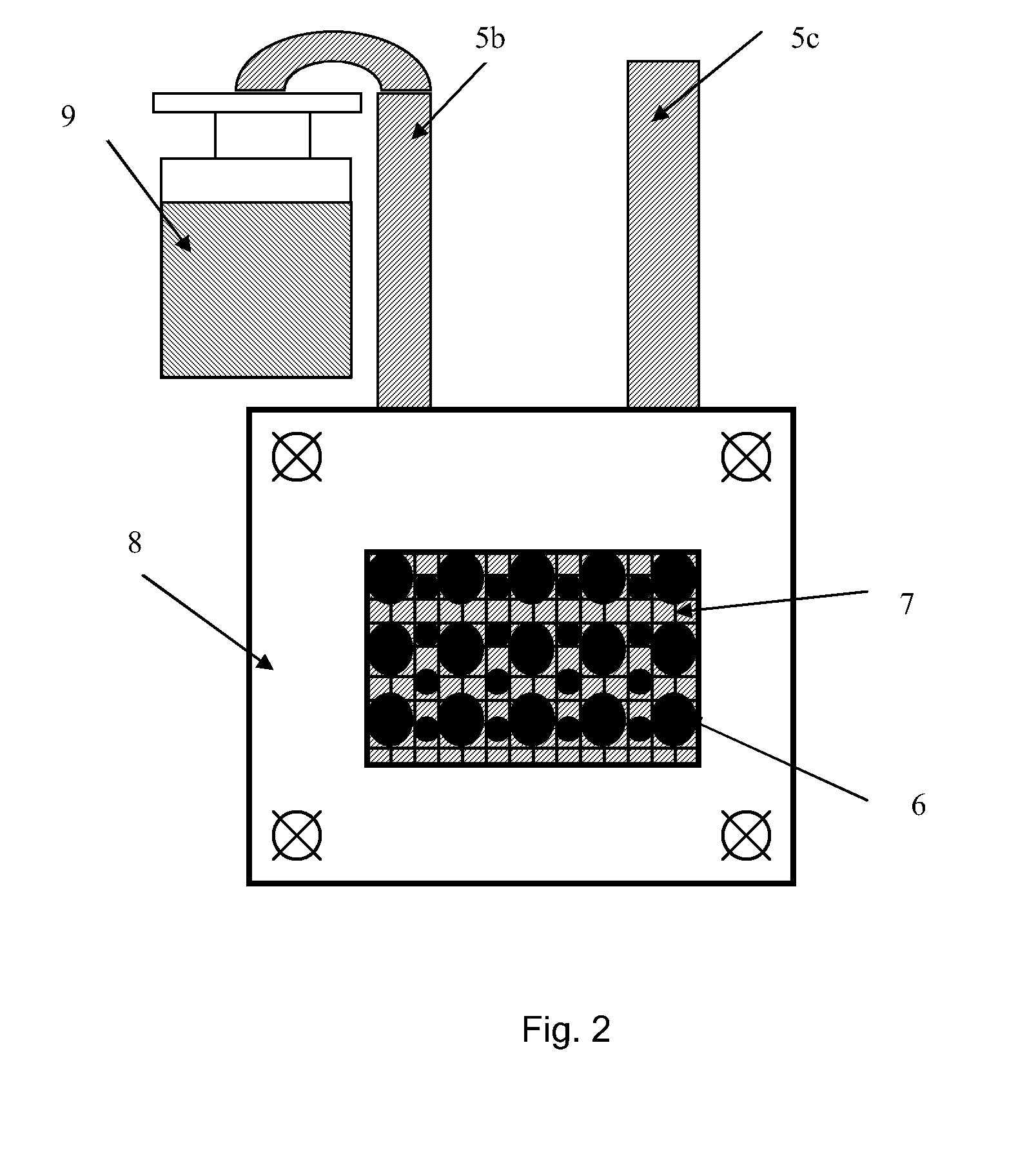Microbial fuel cell cathode assembly
a fuel cell and cathode technology, applied in the direction of fuel cell auxiliaries, fuel cell auxiliaries, reactant parameters control, etc., can solve the problems of high the efficiency of the air cathode is very low, and the power consumption of the pumping mechanism can exceed the power output of the bacteria, etc., to achieve the effect of reducing electrical resistance, facilitating rapid mass transfer of oxygen, and improving contact area
- Summary
- Abstract
- Description
- Claims
- Application Information
AI Technical Summary
Benefits of technology
Problems solved by technology
Method used
Image
Examples
experiment 1
[0065]An experiment was carried out to determine the influence of the catholyte pH on the current density. The experimental apparatus comprised a simple electrochemical cell in the form of a parallelepiped. The interior of the electrochemical cell contained a planar anodic electrode immersed in anodic electrolyte. The cathode assembly to be tested corresponded to that cathode assembly discussed above and illustrated with reference to FIGS. 1 to 3 and was attached to the side plane of the electrochemical cell with the ion exchange membrane in contact with anodic electrolyte. A saturated Ag / AgCl reference electrode was placed in the anodic zone, in contact with the ion exchange membrane which separated the anodic zone from the cathodic zone. Accordingly, the distance between the cathodic separator and the reference electrode was minimal and equal to the thickness of the ion exchange membrane.
[0066]Experiments were carried out using 0.05M phosphate buffer as both anodic zone electrolyt...
example 2
[0068]A second experiment was carried out to determine the influence of the composition of catholyte on the current density. The second experiment was carried out using the same experimental apparatus and the same protocol as described above in relation to Example 1. Three catholyte compositions were tested, each of which had a pH of 4.5. The first catholyte was distilled water mixed with HCl. The second catholyte was 0.05M-phosphate buffer. The third catholyte was 0.05M-phosphate buffer which contained 20% by volume of ethanol. In each case, the pH of the anodic zone was 5.0. FIG. 5 shows the variation in the current density with time with each catholyte composition. Comparison with the results shown in FIG. 4 indicates that the presence of ethanol in the catholyte improves current density. This can be explained by the fact that ethanol lowers the liquid surface tension.
[0069]In these experiments, the rate of diffusion of oxygen to the catalyst was found to be around 10,000 times g...
PUM
 Login to View More
Login to View More Abstract
Description
Claims
Application Information
 Login to View More
Login to View More - R&D
- Intellectual Property
- Life Sciences
- Materials
- Tech Scout
- Unparalleled Data Quality
- Higher Quality Content
- 60% Fewer Hallucinations
Browse by: Latest US Patents, China's latest patents, Technical Efficacy Thesaurus, Application Domain, Technology Topic, Popular Technical Reports.
© 2025 PatSnap. All rights reserved.Legal|Privacy policy|Modern Slavery Act Transparency Statement|Sitemap|About US| Contact US: help@patsnap.com



